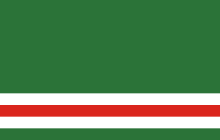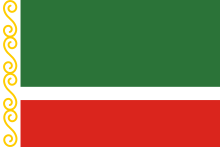History of chechnya
The Nojchi, as the Chechens call themselves, are one of the peoples who have inhabited the Caucasus Mountains since time immemorial; their language belongs to the naj (north-central) group of the large Caucasian language family.
Chechen society has traditionally been organized into autonomous local clans, called teips.
Early history
During the 3rd century, the first Alan state tried to dominate the Caucasus. In the IV century, the Huns managed to dominate the region. From the 8th century to the XIII, the second Alano state dominated Chechnya. The ruling sectors were the Ossetians and the Kabardins. Between the 7th and 11th centuries, the empire of the Khazars and the Abbasid Caliphate fought over the country over and over again. The Chechen language was written during this period for the first time in Arabic characters. In the 13th century and up to the XIV the Mongols of the Golden Horde ruled over Chechnya. In the Middle Ages ethnic Chechens populated the mountainous southeastern region of Chechnya.
During the 15th century, Caucasian tribes liberated their territory and reached the plain to fight the Mongols. From the 7th century to the XVI many Chechens and Ingushetians were Christians, but the influence of Islam grew until Sunnis became the religious majority. Since the 16th century Turks, Persians and Russians have fought over Chechnya and the Caucasus. Russian influence started from the 16th century when Ivan the Terrible founded Tarki in 1559, where the first Cossacks settled. The Russian army deployed in the region (1577 year) consisted mainly of Terek Cossacks who had moved to Chechnya from the Volga region. For hundreds of years since then, the Cossacks living in the plains have coexisted without conflict with the Chechens in the mountains.
Fight the Tsar
In 1783, as part of the Tsar's expansionist policy, the Russian Empire signed with the Georgian kingdom of Kartli-Kakhetia (which had been devastated by Turkish and Persian invasions) the Treaty of Georgievsk, according to which Kartli-Kakhetia became became a protectorate of Russia. To ensure communications with Georgia and other Transcaucasian regions, Russia increased its influence in the Caucasus Mountains.
In 1794, Sheikh Mansur Ushurma, a Chechen Sufi Muslim, united the resistance of the peoples of the Caucasus against the Tsar. He was finally defeated and captured by the Russians, who, although they occupied part of the Caucasus, failed to conquer Chechnya.
In 1814, the Russian governor of the Caucasus warned Tsar Alexander I: "By their example of independence, the Chechens may infect even the most loyal peoples of the empire with their rebellious spirit, [so] we shall have no peace as long as one alone stay alive." In 1818, Russian troops, commanded by General Alexei Yermolov, invaded Chechnya and established the Russian fort at Grozny.
Between 1829 and 1864, the embryonic Islamic state of Imam Shamil fought against the Russian army. Leo Tolstoy enlisted in the Russian army in 1851; After knowing the Chechen reality directly for more than two years, he went from being an enemy to becoming an admirer of the Chechen resistance:
No Chechen speaks of hatred for the Russians; the feeling shared by all Chechens, from the youngest to the oldest, is much stronger than hatred.
As a result of this process, between 1852 and 1856, Tolstoy went from being a soldier to being a writer and then becoming a pacifist. His novels The Cossacks (1863) and, especially, Hadjí Murat (1904) reflect his experience in the Caucasus.
In 1859, Imam Shamil was defeated and arrested. Chechnya became a province of the Russian Empire, which culminated in the conquest of the country in 1864. Oil resources have been in the crosshairs of Russian and international investors ever since. In 1893, several French oil companies, and later English and Dutch ones, began the exploitation of crude oil in the country.
Soviet power
During the events of 1917, the Chechens supported the revolution against Tsarism. In 1918 the Republic of the North Caucasus, which included Chechnya, declared its independence, shortly after the Bolshevik revolution. In 1917 the Chechens seized several Cossack stanitsas.
In 1919 the Chechens unleashed a war against the local Cossacks and the Tsarist White Army that invaded the Caucasus, commanded by General Anton Denikin. From September 1919, the areas controlled by the alliance of the Bolsheviks and the Dagestan Sheikh Uzún Hadzhí (or Hadjí) were called Emirate of the North Caucasus. In 1920 this war ended with the defeat of Denikin. The Red Army controlled Chechnya and the oil was nationalized.
After the death of Sheikh Uzún Hadzhí, an ally of the "reds" there was a new rebellion, this time against the Bolsheviks, which was suppressed in 1921 after several months of fighting, since the Bolsheviks obtained the support of part of the Chechen peasantry with the agrarian reform programs. The Congress of Mountain Peoples held this same year declared the formation of the Soviet Republic of Mountaineers. In 1922 another Chechen uprising led by Saed Beek managed to agree on autonomy for Chechnya, in the form of an autonomous region.
Between 1923 and 1928 Soviet power was consolidated in Chechnya and Ingushetia; the Bolsheviks handed over to this republic the territory occupied by the Terek Cossacks. In 1924 the Republic of the Highlanders was subdivided and a brief period of relative tranquility began when Imam Najmudin, who was opposed to the agrarian reform, was defeated in 1925.
Stalinist Regime
Between 1929 and 1935, hundreds of peasant uprisings took place against Stalin's campaign of forced collectivization, and a wave of anti-Soviet rebellions continued for the next ten years, gradually taking the character of guerrilla warfare. In the midst of strong repression, Stalin's government in 1934 forcibly merged the regions of Chechnya and Ingushetia and turned them into an autonomous republic.
Unleashed by World War II and the German invasion of the Soviet Union, the crisis intensified and the rebel government of Israílov and Sherípov emerged. Germany's secret services had succeeded after World War I in controlling Turkey's contacts in Chechnya, which were established through relations with leaders who opposed land reform and later served to infiltrate the rebel Chechen government. In June 1942, that rebel Chechen government issued a circular, asking the population to "receive the Germans as welcome guests." That government declared that the German Nazis, who were invading the Caucasus at the time, would be greeted with hospitality if they recognized the independence of the Chechen Republic. This position of the rebel government was later used by Stalin as a pretext to decree the complete deportation of the population of Chechnya and Ingushetia, including the communists of both countries.
On February 23, 1944, Stalin's government deported all Chechens, including communists[citation needed], to Kazakhstan, Kyrgyzstan, and Siberia. Both Stalin and Beria, head of the NKVD, were Georgians, a traditionally rival people of the Chechens. A total of 459,486 people according to official records were taken into exile on trains without food or water and deprived of their possessions, they included Chechens, Ingush, Ossetians and Dagestanis, thousands died on the journey, many more in the terrible conditions in which they were what to live NKVD documents estimate that 231,000 of them died in Siberia alone. Only in 1956 would these peoples be allowed to return to find large numbers of Russian settlers (many of these settlers and their descendants would flee when the USSR collapsed from Chechnya).
Post-Soviet Chechnya
The events that led to the dissolution of the Soviet Union had a direct bearing on Chechnya: Perestroika and glasnost led to a strong national movement; In September 1991, the government of the Autonomous Republic of Chechnya and Ingushetia relinquished power under pressure from the pro-independence National Congress of the Chechen People (CNPCh) party, whose top leader was former Soviet Air Force General Dzhojar Dudayev.
Independence
During the same period, CNPC militants seized control of the entire republic, taking over the local congress and killing the Russian chief of Grozny, Vitali Kutsenko. The following month Dzhokhar Dudayev won surprising popular support to take over the central government, seize the administration and become president. Dzhokhar Dudayev unilaterally proclaimed independence, and as a consequence of this, the President of the Russian Federation Boris Yeltsin dispatched troops to Grozny, which were forced to withdraw when Chechen militiamen surrounded them at the airport.
The Autonomous Republic of Chechnya and Ingushetia was divided in two in June 1992, and Ingushetia (as an Autonomous Republic) was integrated into the Russian Federation. Chechnya's formal declaration of independence by its new parliament was made in 1993, as the Chechen Republic of Ichkeria. Between 1991 and 1994, 300,000 people of non-Chechen ethnicity, mostly Russians, fled the republic. Acts of violence occurred against the non-Chechen population. The industry began to fail after Russian engineers and workers abandoned it. This facilitated Russia's attempts to avoid independence and regain control of the Republic through the First and Second Chechen Wars, fought between various Chechen armed groups and the federal army., resulting in around 150,000 deaths in the period between 1994 and 2003. The Chechen wars have been the bloodiest conflicts in the Caucasus in recent times.
First Chechen War (1994-1996)
The first Chechen war, triggered by Yeltsin's decision from 1994 to 1996, was a disaster for Russia. There were great propaganda failures like Budiónnovsk. The Russians attacked Grozny and faced with the impossibility of overcoming the resistance and dominating the territory, Lébed, Yeltsin's envoy, signed an armistice. 80,000 people had already died because of this war.
After the assassination of Dzhojar Dudayev in 1996, the weakness of the Chechen state and institutions gave rise to radical Islam (Wahhabism). But there are different Islamic factions.
Second Chechen War (1999-2002)
The second war began after the invasion of Dagestan by Wahhabist fundamentalists of Chechens, Dagestanis and others, who wanted to establish an Islamic republic. There were also serious attacks by Moscow against residential buildings, which were attributed to Chechen terrorists. Although the incursion into Dagestan was not supported by the Chechen government and it condemned the attacks in Moscow, Russia saw an opportunity to regain its power and developed a strategy of remote attack that devastated Chechnya. The Russian army managed to control a large part of the country, but in the mountains the actions of different independent rebel groups continue.
Recent confrontations
In elections organized by the Russian authorities and boycotted by the pro-independence supporters, Akhmat Kadyrov was elected president in the elections held on October 5, 2003. On May 9, 2004, he was killed in an attack in Grozny. On August 29, 2004 Alu Aljanov, a former Chechen interior minister, was elected president in elections held under conditions that were once again questioned and boycotted by the independentistas.
Alongside this official Russian government, there is another self-proclaimed independent government that is not recognized by any state. In 1997 Aslan Maskhadov was elected president to replace Dudayev for four years in general elections, when separatists controlled the country. After the start of the second Chechen war, his power was limited, since he could not even control the part of the guerrilla forces led by the Islamic fundamentalist Shamil Basáyev, whose followers have carried out terrorist attacks in Moscow, Beslan (Ossetia), Ingushetia, Dagestan and other places. Maskhadov was killed in March 2005 by Russian troops trying to capture him, being succeeded by Sheikh Abdul Halim. On June 17, 2006 Sheikh Abdul Halim Saduláyev died in a battle in Argun, being succeeded by the then vice president Doku Umarov. On July 7, 2006, the Russians announced that they had killed Basayev.




